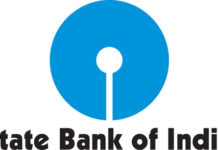Important Points about Himachal Pradesh

The name ‘Himachal’ was coined from Sanskrit him means ‘snow’ and achal means ‘mountain’, by Acharya Diwakar Datt Sharma, one of the state’s most eminent Sanskrit scholars. A lesser known fact is that Himachal Pradesh, which is famous for its natural beauty, hill stations, and temples produces surplus hydroelectricity and sells it to states like Delhi, Punjab, Rajasthan, etc. Let’s read more about Himachal Pradesh and its diverse and beautiful Himalayan landscapes that attract tourists from all over the world.
Himachal Pradesh |
|
| Capital & Imp Cities |
– Shimla (Summers) & Dharamsala (Winters) – Shimla, Kullu, Mandi and Hamirpur. |
| Date of Formation |
– After India’s independence in 1947, there was a demand in some quarters for the merger of Hill state with east Punjab but it met with opposition from the rulers and people. – In what is Himachal Pradesh today, Praja – As a result, Himachal Pradesh came – Himachal Pradesh was conferred |
| Districts | 12 |
| Languages | – Hindi (Official Language) & English (Additional official language) – Pahari, Dogri, Mandeali, Kangri and Kinnauri. |
| Known as/for |
Fruit bowl of the country, All Seasons’ State & Apple State All houses have a toilet & 100% hygiene has been achieved in the state. Also, |
| Physical characteristics |
Entirely hilly region Himachal Pradesh can be divided into 3 distinct regions: – Shivalik or Outer Himalayas – Middle Himalayas or Inner Himalayas – Greater Himalayas or the Alpine zone The state lies on foothills of Dhauladhar range. The climate varies from hot & subhumid tropical to cold & glacial. While Dharamsala receives heavy rainfall, Lahaul-Spiti gets less rainfall. |
| Natural Vegetation |
– Forest cover = 66.52% – High diversity of Medicinal & Aromatic plants – The state government is gearing up to make Himachal Pradesh the flower basket of the world. – Has around 463 birds, 77 mammalian, 44 reptile and 80 fish species. – 30 wildlife sanctuaries & 3 conservation reserves. – Alpine to the north-east gradually transforms to dry temperate grasslands through moist temperate while moving to the southwest |
| Major rivers | – Satluj flows from Rakas Tal near Manasarovar Lake to the Chenab – Ravi flowing from Bhandal & Tantgiri glaciers in Chamba in Himachal Pradesh to the Indus. – Beas flowing from Vyas Kund at Rohtang Pass to the Sutlej – Chenab flowing from Bara Lacha pass to the Sutlej – Yamuna flows from Kalinda Parbat in Uttarakhand to the Ganga (Triveni Sangam – the Ganga, Yamuna & the invisible Saraswati river at Allahabad) |
| Major Regional festivals |
Halda, Lohri, Baisakhi, Himachal Winter carnival, Kullu Dussehra, Phulaich, Lossar, Gotsi, Sairi, Faguli |
| Major art forms |
– Schools of painting: Kangra, Chamba, Basohli, Garhwal, Thangka – Dance: Kayang Mala dance, Demon or Rakshasa Dance, Shan, Shabu and Shabbo dance, Dalshone and Cholamba, Keekali, Kullu Natti dance |
| Industry | – Over 93% of the population in Himachal depends directly upon agriculture, which provides direct employment to 71% of its people. – Electronics, toys, etc. |
| Minerals | Rock salt, limestone, gypsum, silica-sand, and baryte |
| Agriculture | – Wheat, rice, maize, barley, apples, plums, olives, figs. – Apple (major cash crop) → avg. annual production – 5 lakh tonnes → constitute 49% of total area under fruit crops and 85% of total fruit production in the state with an estimated economy of ₹3500 crore and per hectare production of 8 to 10 tonnes. – Apples from Himachal are also exported to Indian states and other countruies. |
| Geographical indications | Kullu shawl, Kangra Tea, Chamba Rumal, Kinnauri Shawl |
| State animal | Snow leopard |
| State bird | Western tragopan (Jujurana) |
| State flower | Common rhododendron |
| Important historical sites |
Ruined fort and rock inscription in Kangra, Bhim-ka-Tila in: Buddhist Stupa in Kangra, Katoch Palace in Hamirpur, Phoo Gumpha in Tabo, Vice Regal Lodge in Shimla |
| World heritage sites |
Great Himalayan National Park, Kalka-Shimla Railway under Mountain Railways of India |
| Ramsar sites | Chandra Taal, Pong Dam Lake, Renuka Lake |
| Biodiversity hotspots |
— |
| Endemic bird areas |
Western Himalaya |
| Bird sanctuaries |
Gamgul Siahbehi Sanctuary |
| National parks |
– Great Himalayan National Park – Pin Valley National Park, Inderkilla National Park, Khirganga National Park, Simbalbara National Park |
| Biosphere Reserve |
Cold Desert Biosphere Reserve:
Pin Valley National Park |
| Wildlife Sanctuaries |
Bandli WLS, Chail WLS Chandratal WLS, Churdhar WLS Daranghati WLS, Dhauladhar WLS Gamgul Siyabehi WLS, Kais WLS Kalatop-Khajjiar WLS, Kanawar WLS Khokhan WLS, Kibber WLS Kugti WLS, Lippa Asrang WLS Majathal WLS, Manali WLS Nargu WLS, Pong Dam Lake WLS Renuka WLS, Rupi Bhaba WLS Sangla Valley (Rakchham Chitkul) WLS Sech Tuan Nala WLS Sainj WLS, Shikari Devi WLS Shimla Water Catchment WLS Talra WLS, Tirthan WLS, Tundah WLS |
















